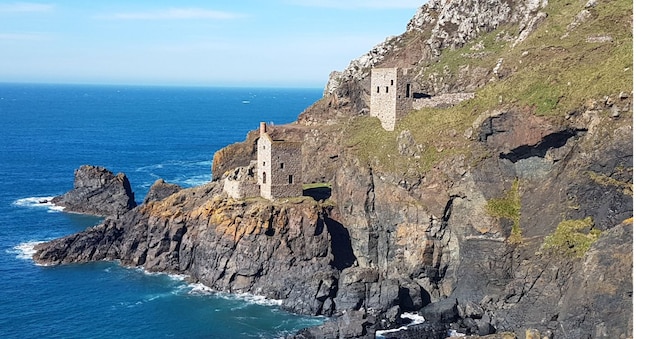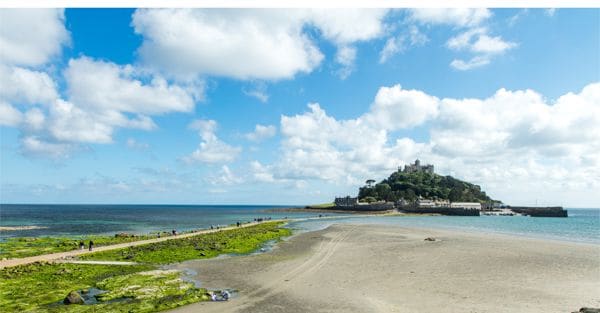Secret Agent Trails in Rocky and Discreet Cornwall


Put aside the heart-rending sunsets, the backdrop to the adventures of Poldark, the rebel hero born from the pen of Winston Graham, or the languors that emanate from the novels of Rosamunde Pilcher, so dear to German readers. Cornwall has another gift, precious and enviable: discretion.
Le Carrè's refuge In this vein, one can build paths that smack of secrets and spies, because in the peninsula even intelligence travels along sophisticated fiber optic cables, by sea and land, in the context of a harsh but welcoming nature.
«I like the Cornish because they mind their own business and leave you alone» said, not by chance, David Cornwall alias John Le Carrè, the icon of spy books who holed up in Tregiffian Cottage in Land's End ( www.landsend-landmark.co.uk ), in the West, for forty years, a perfect refuge for the ex-MI6 converted to writing spy stories.
It was only five years ago, when he died, that his drinking companions at the St Buryan pub discovered who the gentleman was who got heatedly involved in political discussions and who loved walking along the cliffs, to the point of donating his pristine slice of land to the National Trust so that no one else could build on it.

Cornwall, historically, is made for hiding, thanks to its geographical conformation all cliffs overlooking the sea, a paradise for smugglers' hideouts but also a laboratory for experimenting, monitoring, creating new basins crucial for intelligence.
European pilgrims After the mass tourism boom that has still held up to Covid contributing a third to the local GDP, today the Duchy created by Edward II in 1337 and intended for the heirs to the throne is preparing for a slowdown in tourism, the British, regardless of Brexit and Esta, are returning to travel to Europe. The Algarve costs less and is still within reach of flights.
As for Europeans, the pilgrimage of German tourists to Cornwall does not stop, always in the wake of the dramas inspired by Picher, followed – who would have ever thought? – by the Italians. It is Jon Hyatt himself, president of the tourism authority ( www.visitcornwall.co ) who asks: «Why the Italians? I don't know».
For Italians who “don’t know why” set off for this extreme part of South West England that has resisted everyone, from the Vikings to the Romans to the Saxons and doesn’t feel English, but Cornish, we suggest a visit to the Porthcurno Museum of Global Communications ( https://pkporthcurno.com ) remembering that it was from Poldhu, thirty kilometres to the east, that Guglielmo Marconi launched the first historic signal overseas. The Goonhilly Satellite Earth Station in Helston, closed since 2012, was also the first in the world.
Moreover, taking advantage of the characteristics of the territory, in July 2021 the then Prime Minister Boris Johnson placed the G7 in a well-hidden cove reachable only by very narrow one-way roads, giving life to the so-called “miracle” of Carbis Bay.

Satellites and submarines Continuing along the coast from west to east in North Cornwall you come to Bude, where it is impossible to miss the 20 gigantic satellite dishes that tower between the villages of Morwenstow and Coombe, on the site of the former Second World War airfield, RAF Cleave.
It is the strategic base of the British secret communications service GCHQ (Government communications headquarters) which safeguards the security of Great Britain, “on behalf of the country and its interests”.
From Bude the red City Plymouth bus no.12 heads down towards South East Cornwall, the undisputed realm of the Royal Navy, and here begins the swarm of spy ships, with “enemy” submarines attempting to cut the cables, sometimes as small as a gardener's hose, laid on the seabed.
It's not a naval battle, but it's close, with the latest incident occurring in November when a Royal Navy Astute-class attack submarine was allowed to surface near the Russian “spy ship” Yantar.
Ironically, the first person to design a ship to lay submarine cables, thus laying the foundations for modern transoceanic communications, was Isambard Knight Brunel, the visionary engineer of the Victorian era, creator of the suspension railway bridge that broke the ancestral isolation of Cornwall from the county of Devon and from England as a whole.
News and insights on political, economic and financial events.
Sign upilsole24ore




